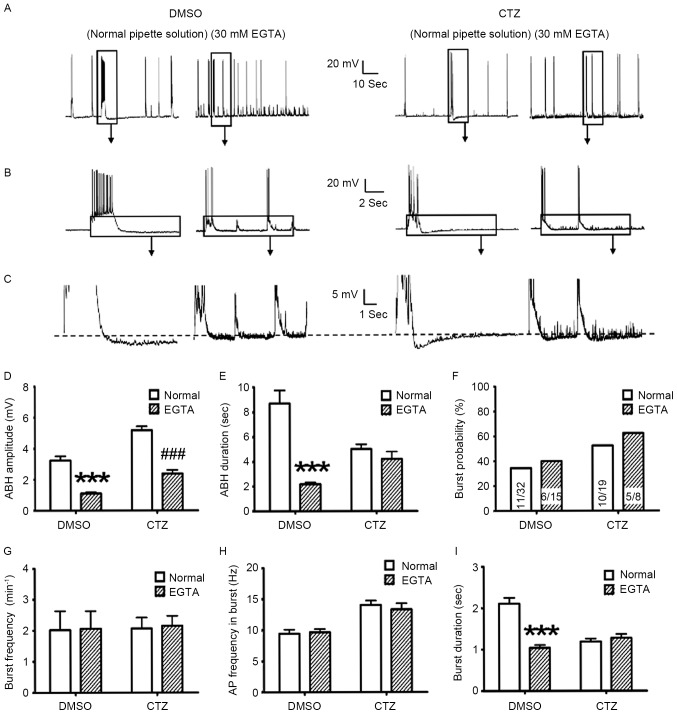Figure 6.
High EGTA pipette solution reduced the ABH; however, it did not alter the burst probability and strength. (A-C) Representative original recording traces of neurons treated with normal and 30 mM EGTA pipette solution in the DMSO control and 5 µM CTZ groups. The boxes indicate the area that has been enlarged in the subsequent images. (D) High EGTA significantly reduced the amplitude of ABH in the control (normal: n=47 bursts in 11 neurons; 30 mM EGTA: n=35 bursts in 6 neurons) and CTZ groups (normal: n=35 bursts in 10 neurons; 30 mM EGTA: n=22 bursts in 5 neurons). (E) High EGTA only reduced ABH duration in the control group, not in the CTZ group. There were no significant differences identified between two types of pipette solution, in control and CTZ groups for (F) bursting neuron percentage [the numbers written in the bars represent the number of cells (number with burst activities/total number)], (G) bursting number per minute and (H) AP frequency in burst. (I) High EGTA significantly decreased the burst duration in the control group; however, not in the CTZ group. Data are presented as the mean ± standard error mean. ***P<0.001 DMSO/normal vs. DMSO/EGTA; ###P<0.001 CTZ/normal vs. CTZ/EGTA. EGTA, ethylene glycol-bis(b-aminoethyl ether)-N,N,N',N'-tetraacetic acid; ABH, after burst hyperpolarization; CTZ, cyclothiazide; AP, action potential.

